Capitol Records Building
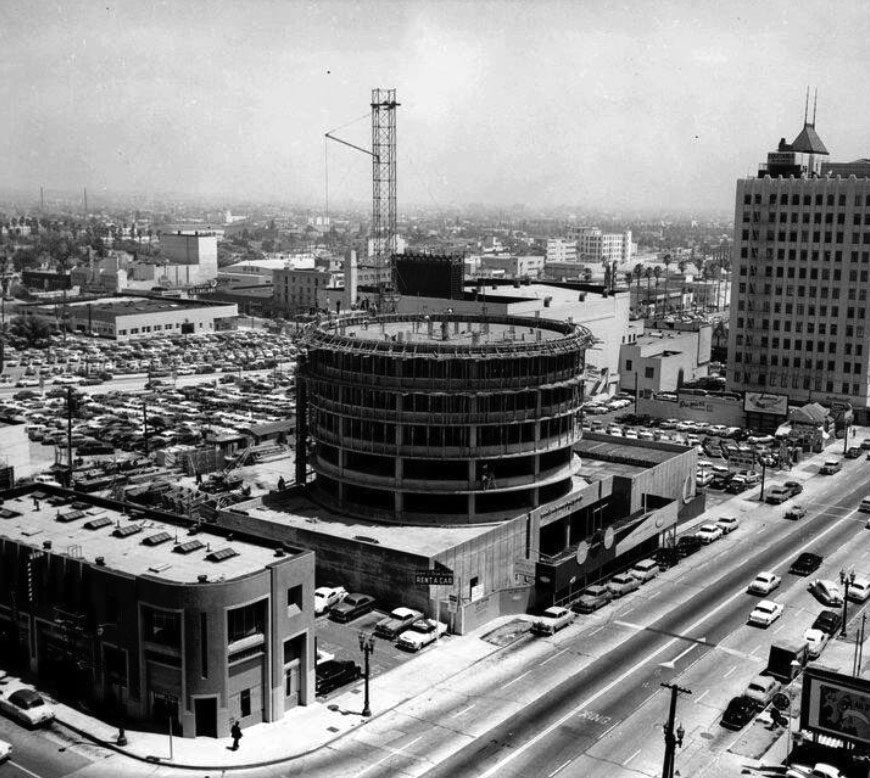 |
|
| (1955)* - View looking southeast showing the Capitol Records Building in the early stages of construction, located near the corner of Yucca and Vine streets. |
Historical Notes The new Capitol Records Building was built one block north of the famous corner of Hollywood and Vine. The landmark building was designed by Louis Naidorf of Welton Becket Associates, the architectural firm that also designed the Music Center, Cinerama Dome, Santa Monica Civic Auditorium, and the department store that now houses the Petersen Automotive Museum. The 13-story tower completed in April 1956 resembles a tall stack of 45 RPM records, however Welton Beckett claims he just wanted to build a structure that economized space. The Capitol Records Building was the world’s first circular office building ever completed as of April 1956.* |
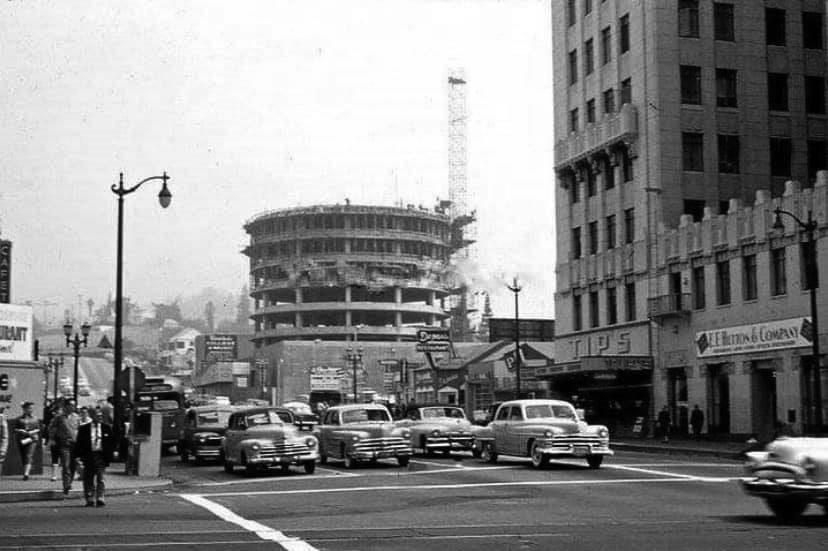 |
|
| (1955)^ - View looking north showing the Capitol Records Building under construction as seen from Hollywood and Vine. Photo courtesy of Martin Turnbull |
Historical Notes Designed by Louis Naidorf of Welton Becket and Associates, the tower was the world’s first circular office building, constructed of reinforced concrete and punctuated by a series of porcelain enamel sun shades stepping down each floor of the building. |
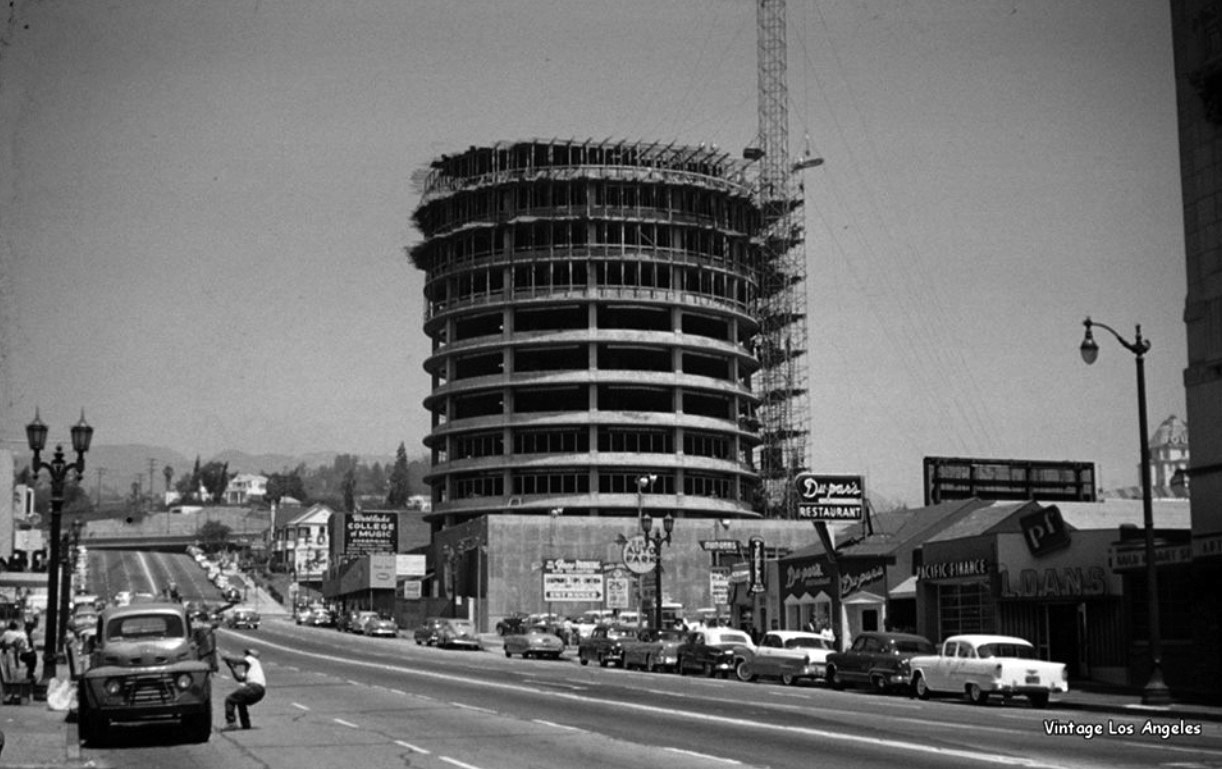 |
|
| (1955)^ – View looking north on Vine Street showing the Capitol Records Building under construction. At lower right-center can be seen Du-par's Restaurant. Photo courtesy of Vintage Los Angeles |
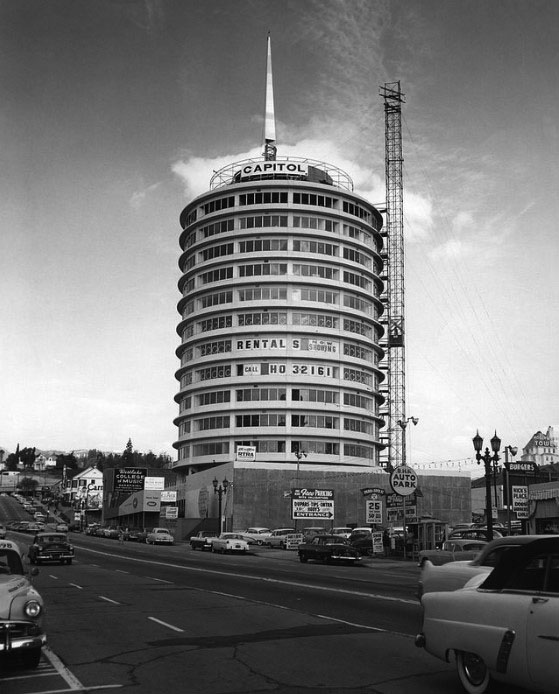 |
|
| (1956)#* - View showing the Capitol Records Building nearing completion with sign advertising rental space. |
 |
|
| (1956)+#+ - View showing the newly completed Capitol Records Building located at 1750 N. Vine Street. Du-par's Restaurant is seen in the foreground. |
Historical Notes The 13-story Capitol Records Building, also known as the Capitol Records Tower, became one of Hollywood's Landmark (also LA). Construction was contracted by British company EMI soon after its 1955 acquisition of Capitol Records, with completion in April 1956. Located just north of the intersection of Hollywood and Vine and consolidating the West Coast operations of Capitol Records, the structure is home to the recording studios and echo chambers of Capitol Studios.* |
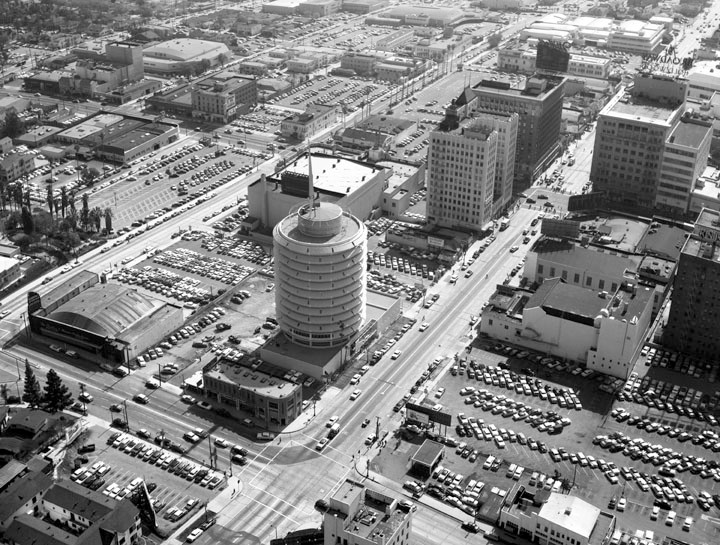 |
|
| (1956)* - Aerial view of Hollywood showing the Capitol Records Building in the center surrounded by other buildings near Hollywood Boulevard and Vine Street; view is looking southeast. The visible streets are (diagonally, r to l): Vine Street, Argyle Avenue, Gower Street, and Bronson Avenue and (l to r): Yucca Street, Hollywood Boulevard, and Sunset Boulevard. Other visible buildings are Yucca Vine Building (corner of Yucca and Vine), Equitable Building (corner of Vine and Hollywood), Pantages Theatre (corner of Hollywood and Argyle), and Charles E. Skinner Studios (corner of Argyle and Yucca). |
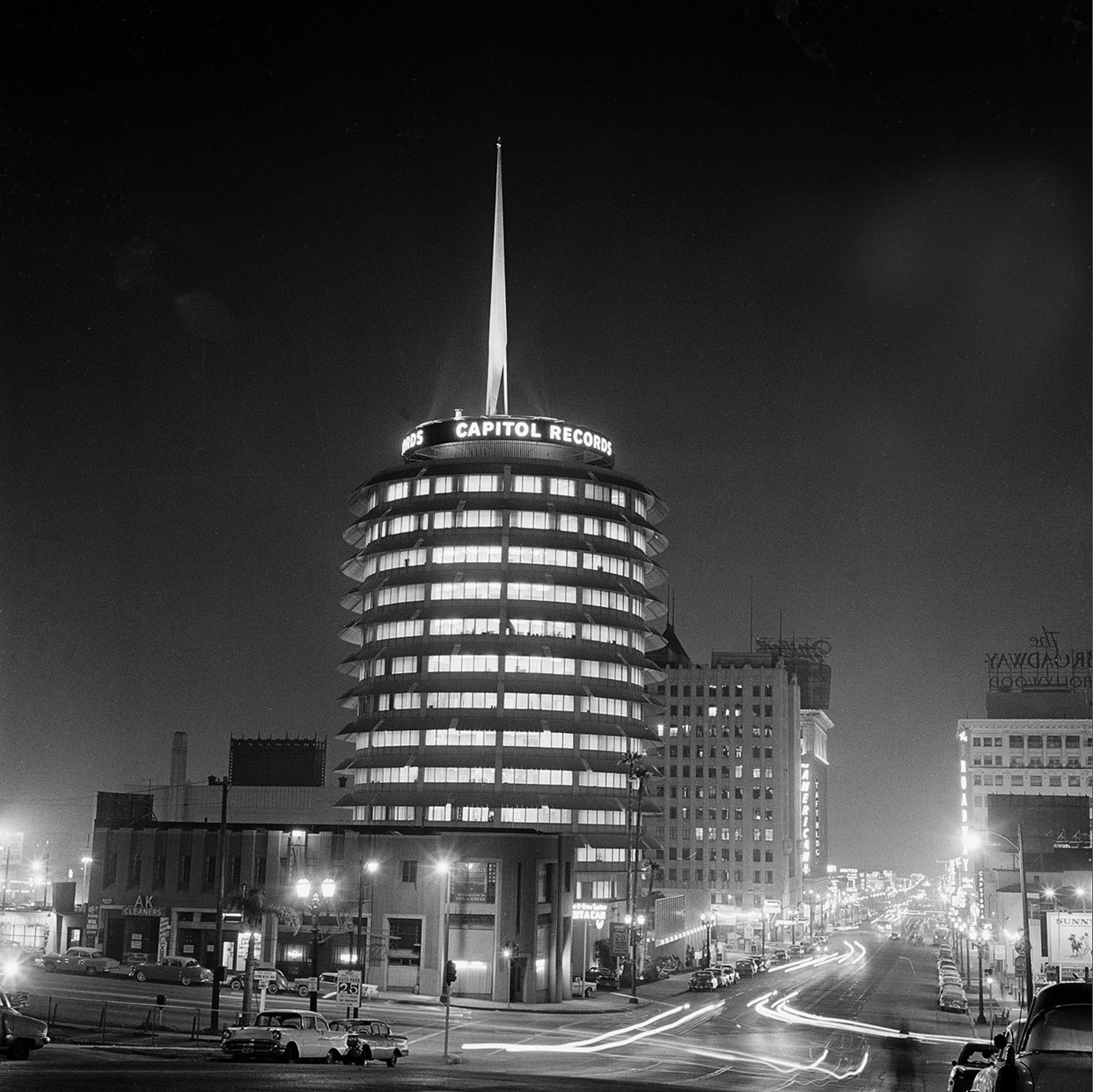 |
|
| (1958)* - Nighttime view, looking south, of the intersection of Vine and Yucca streets at 1750 N. Vine Street. The Capitol Records Building stands tall near the southeast corner. LA Times Archihve / AP |
Historical Notes The wide curved awnings over the windows of each floor and the tall spike emerging from the top of the building combine to give it the appearance of a stack of vinyl 45s on a turntable, although it was not originally designed with that idea in mind. |
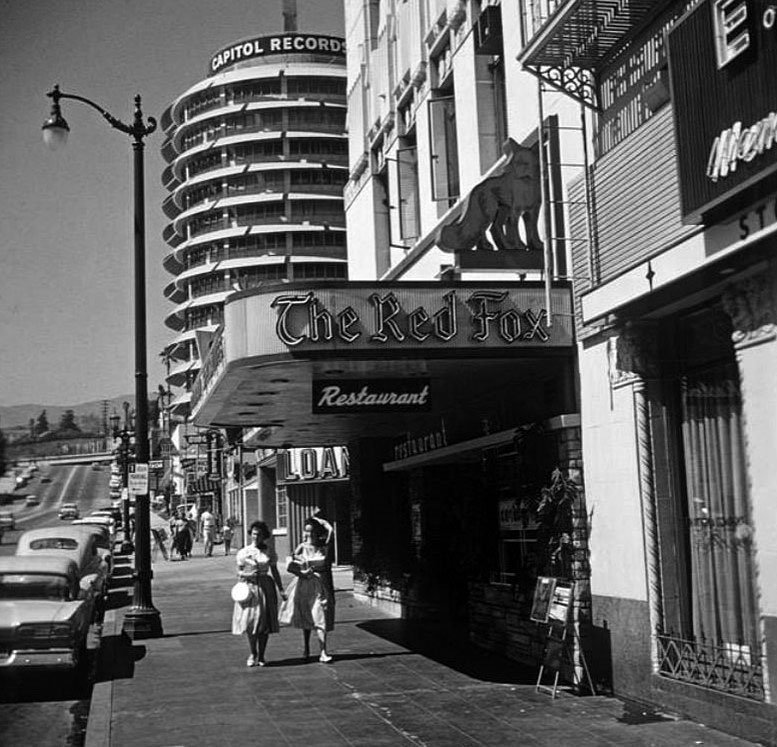 |
|
| (1960)#* – View looking north on Vine Street showing the Capitol Records Building in the background with The Red Fox Restaurant in the foreground. Du-par's Restaurant is located behind the Red Fox Restaurant out of view. |
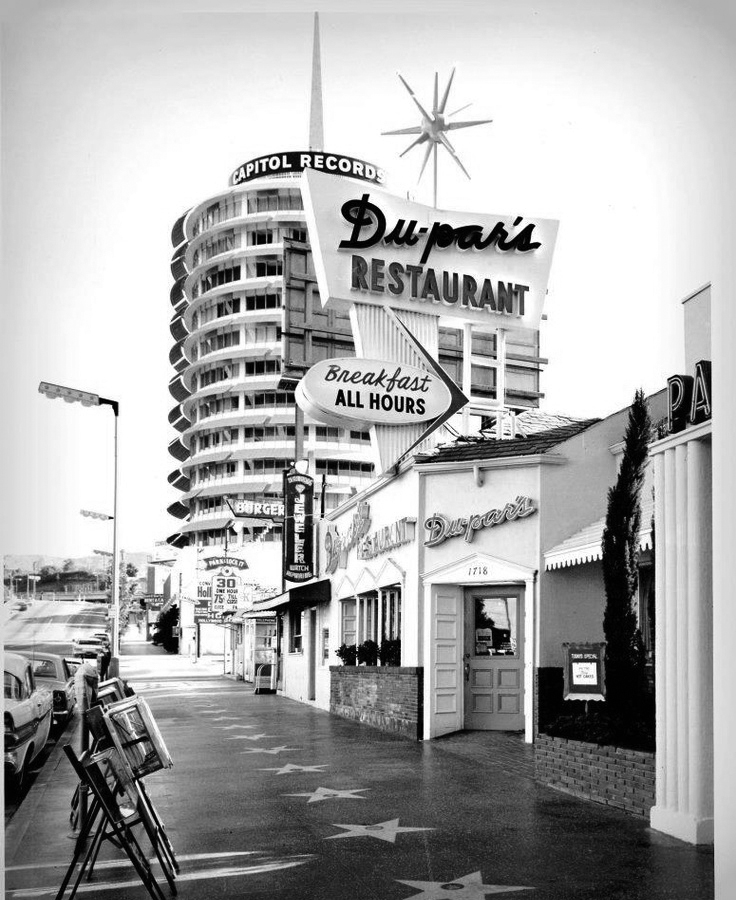 |
|
| (1960s)* - View looking north on Vine St. just north of Hollywood Blvd. Du-par's Restaurant is open for business: Breakfast ALL HOURS. In the background stands the Capitol Records Building. Note that the streetlights have been changed-out to a new 3-bulb design, called Hollywood Specials. Photo courtesy of Dupar's Restaurant |
Historical Notes The first Du-par's was founded in 1938 at the Los Angeles Farmers Market by James Dunn and Edward Parsons, who combined their surnames to create the restaurant's name. The chain was purchased in 2004 by an investor group led by W.W. "Biff" Naylor, the son of noted California restaurateur Tiny Naylor. Du-par's expanded in 2009 to include several locations from the bankrupt Bakers Square chain.* |
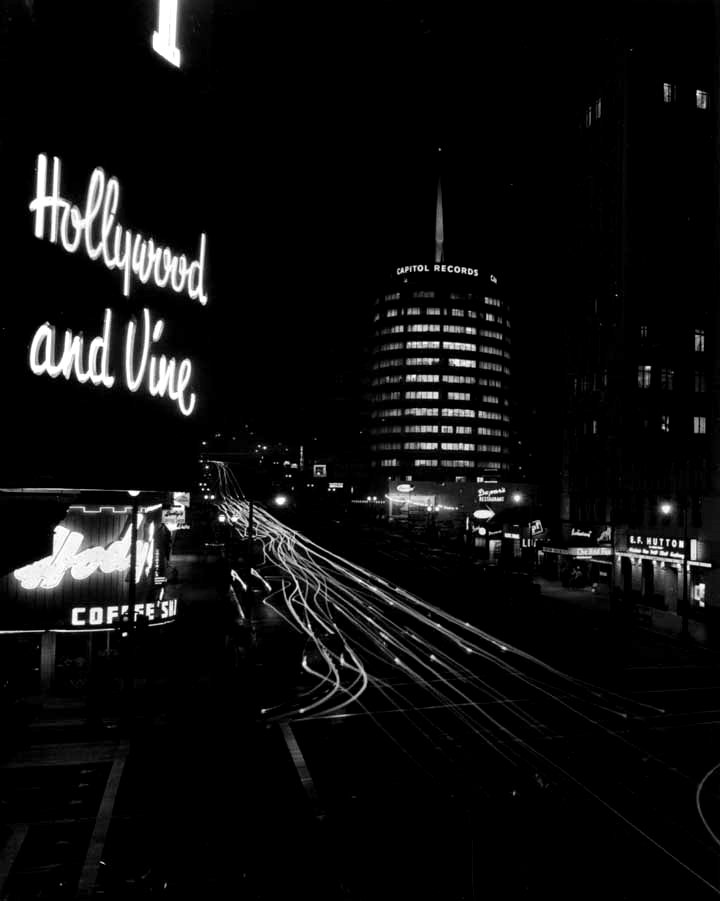 |
|
| (ca. 1956)^ - View looking north from the intersection of Hollywood and Vine. Photo courtesy of Authenticated News Archives / LA Curbed |
Historical Notes The blinking light atop the tower spells out the word "Hollywood" in Morse code, and has done so since the building's opening in 1956. This was an idea of Capitol's then president, Alan Livingston, who wanted to subtly advertise Capitol's status as the first record label with a base on the west coast. The switch was initially activated by Leila Morse, the granddaughter of Samuel Morse. In 1992 it was changed to read "Capitol 50" in honor of the label's fiftieth anniversary. It has since returned to spelling "Hollywood". A black and white graphic image of the building appeared on the albums of many Capitol recording artists, with the phrase, "From the Sound Capitol of the World".* |
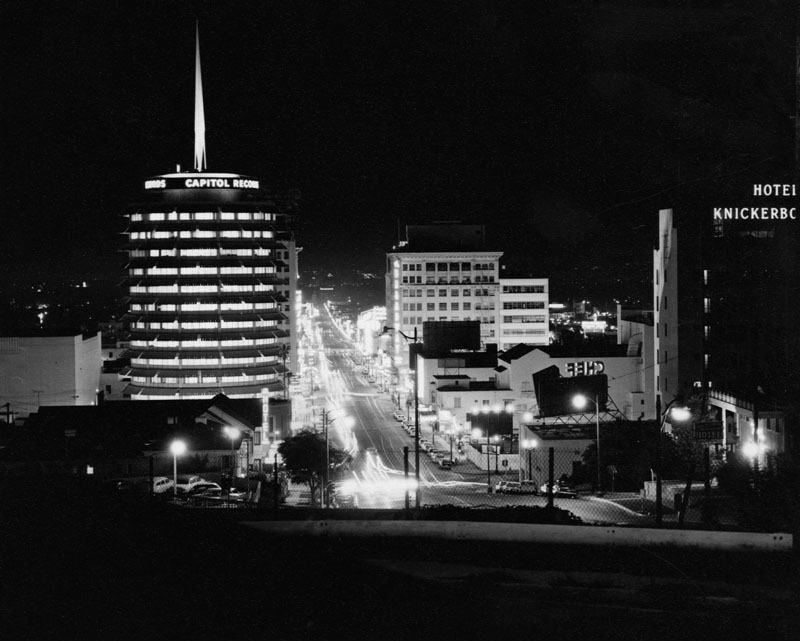 |
|
| (ca. 1960)* - View looking south on Vine St. shows the Capitol Records Building at 1750 N. Vine Street. It is truly a Hollywood landmark. |
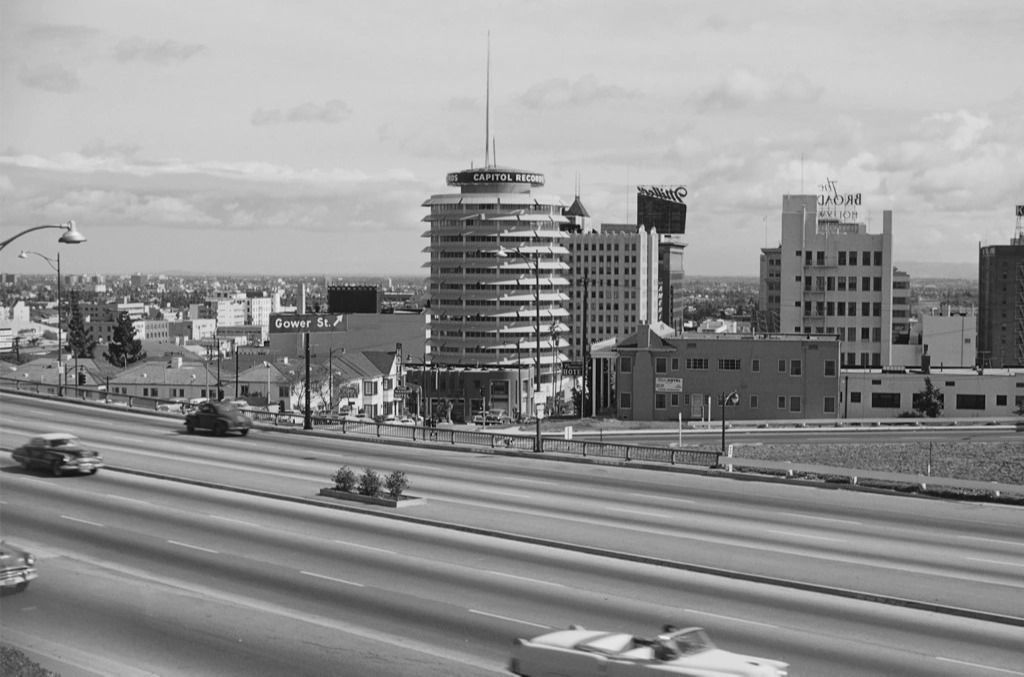 |
|
| (1956)* – Capitol Records building as seen from across the Hollywood Freeway. Photo courtesy of Billboard |
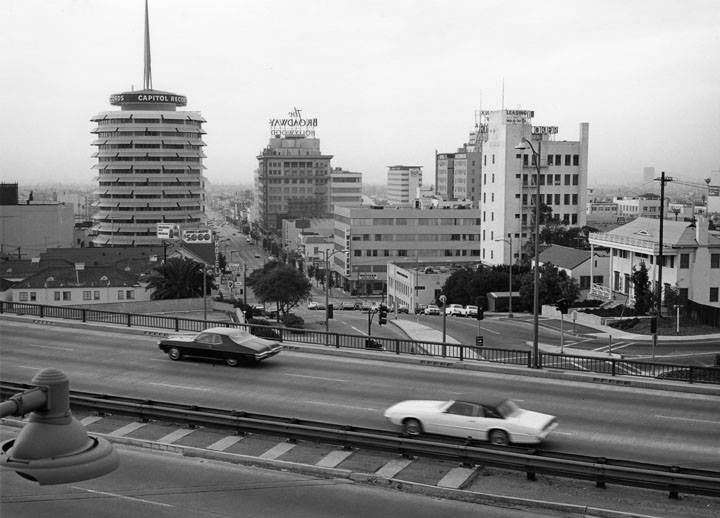 |
|
| (1967)* - View looking south on Vine Street from across the Hollywood Freeway showing the Capitol Records Building and Broadway-Hollywood Building. Photo by William Reagh / California State Libary |
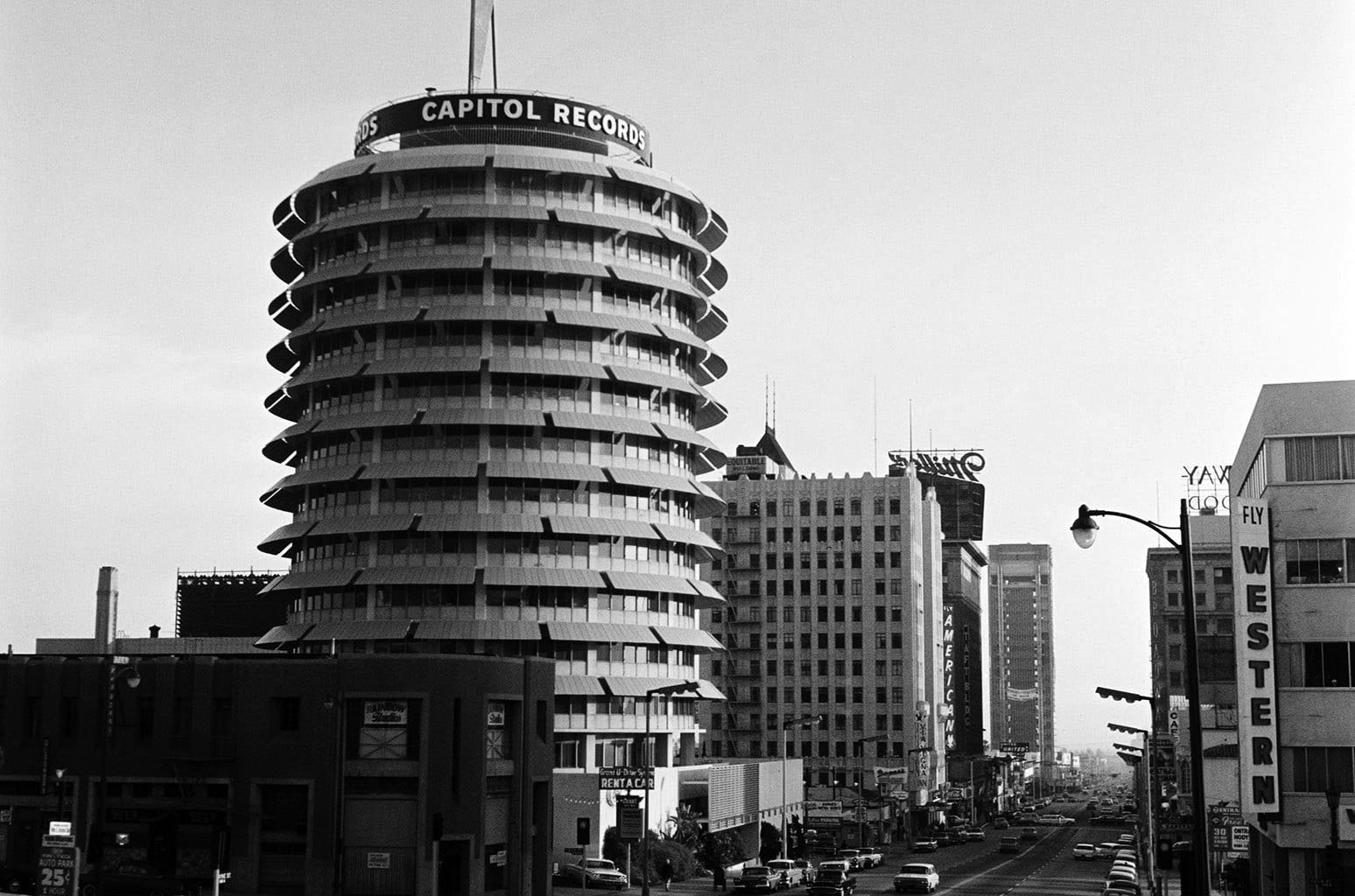 |
|
| (1960s)^ - View looking south on Vine Street showing the Capitol Records Building standing tall in the foreground. Photo courtesy of Freddie Brock |
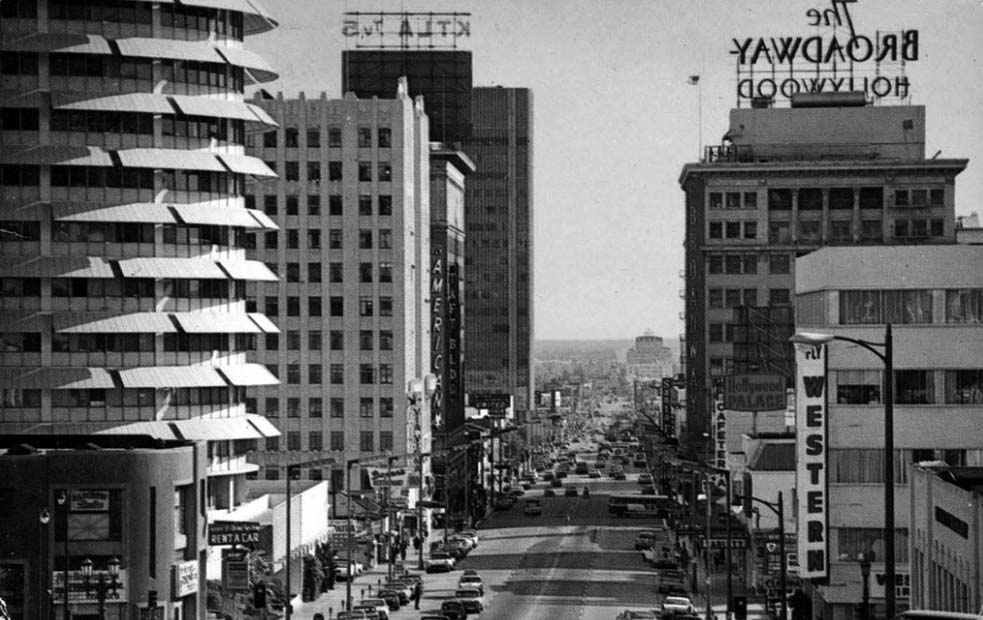 |
|
| (ca. 1961)#* – View looking south on Vine Street from Yucca Street with the Capitol Records Building on the left. |
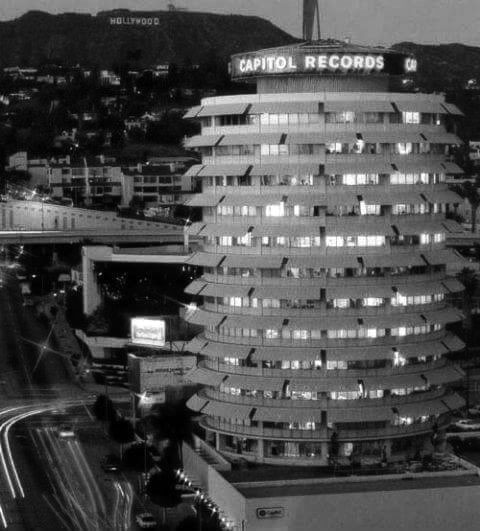 |
|
| (ca. 1960s)* – Night view looking north showing the Capitol Records Building with the Hollywood Sign in the background. Photo courtesy of Classic Hollywood / Los Angeles / SFV |
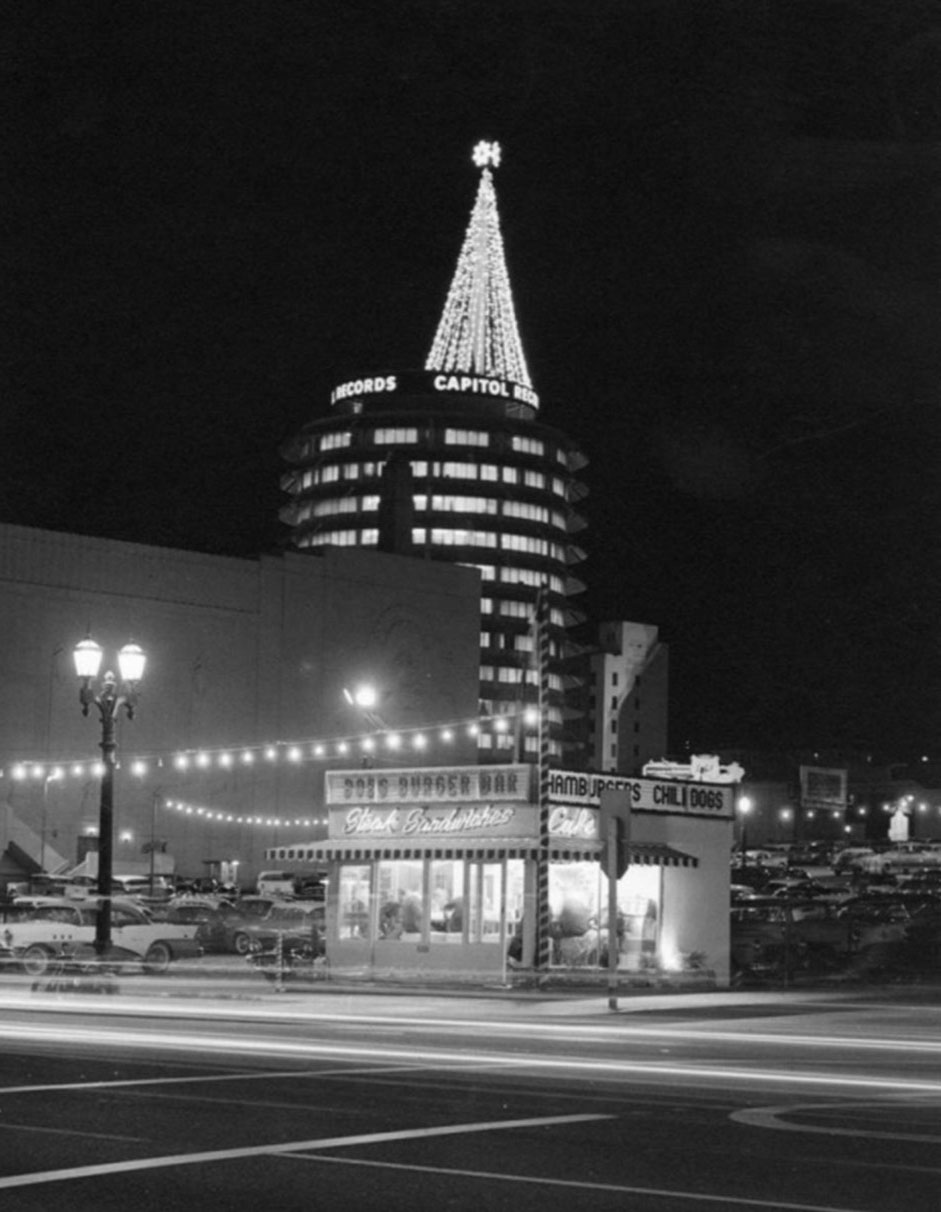 |
|
| (ca. 1962)* – View looking northwest from the intersection of Hollywood and Argyle showing the Capitol Records Building in the background with the Pantages Theatre on the left and a hamburger stand in the foreground. Photo by Roy Hankey / LA Public Library Image Archive |
Historical Notes Designed by Stewart Romans of Ollsen Lighting and featuring 4,373 bulbs (at 25 watts each), the Christmas tree on top of the Capitol Records Building was the first of its kind, and it has been a part of the Hollywood skyline each December since 1958, save for 1973, when L.A. experienced an energy crisis.^^*^^ |
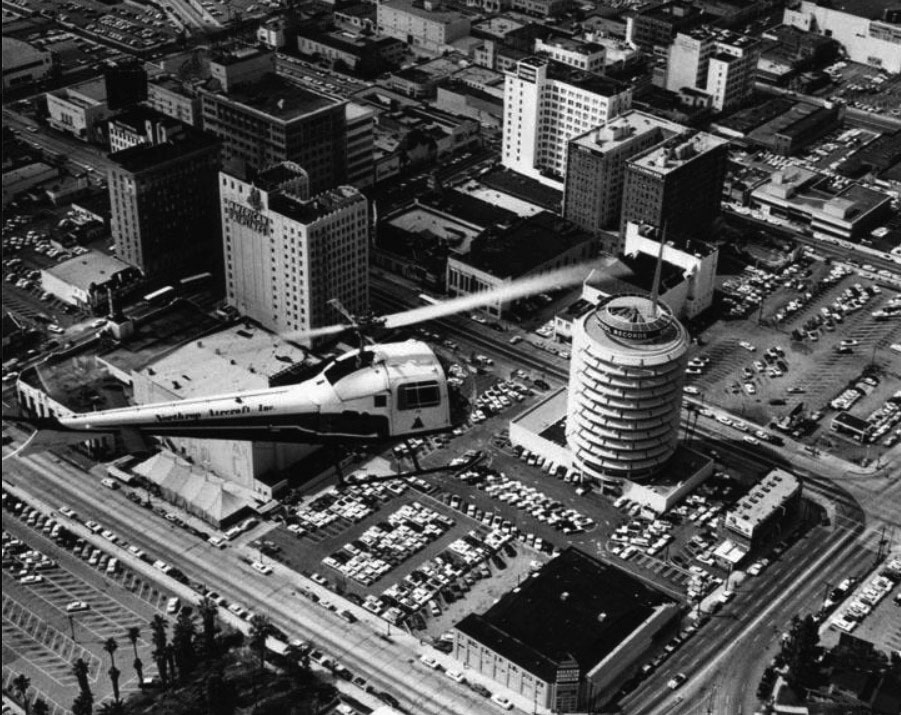 |
|
| (1970)* - Aerial view looking southwest showing a helicopter hovering over Hollywood. The intersection of Hollywood and Vine is at upper center-left and the Capitol Records Building stands tall at center-right. LAPL Image Archive |
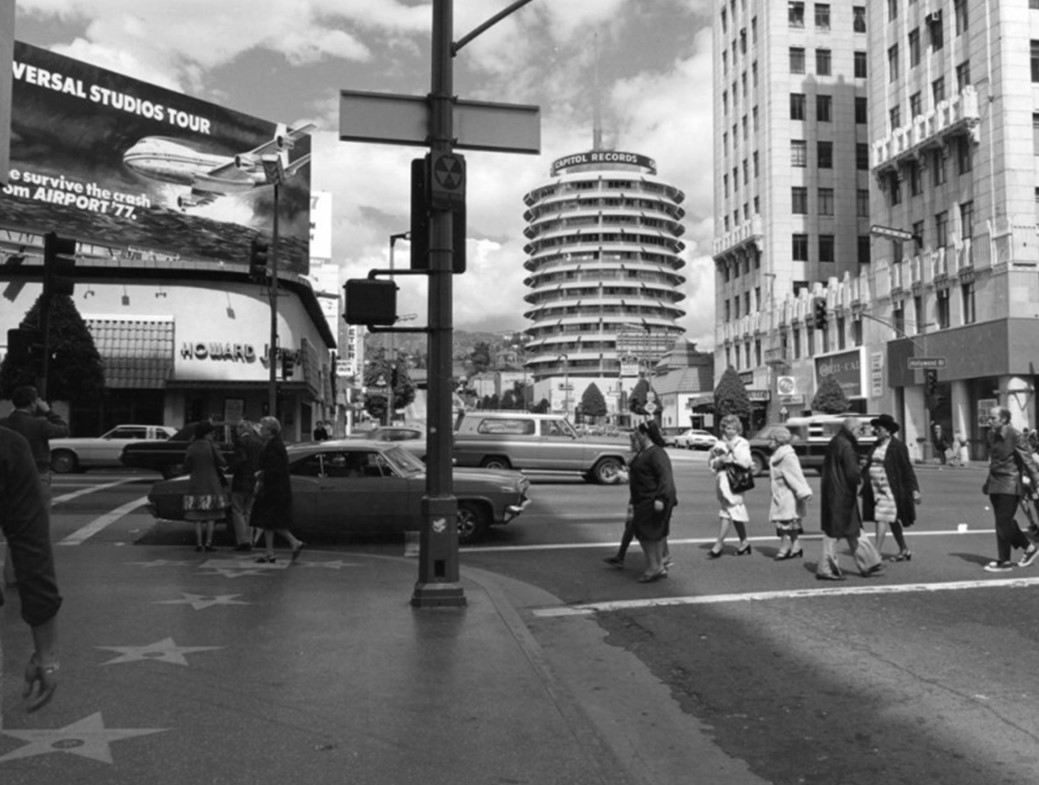 |
|
| (1978)* - A view taken from the west side of Vine St., looking north toward the Capitol Records Building. A sign over the Howard Johnsons on the northwest corner advertises Universal Studios Tour and the film Airport '77. Also visible are stars on a portion of the Hollywood Walk of Fame. Photo by William Reagh / LAPL Image Archive |
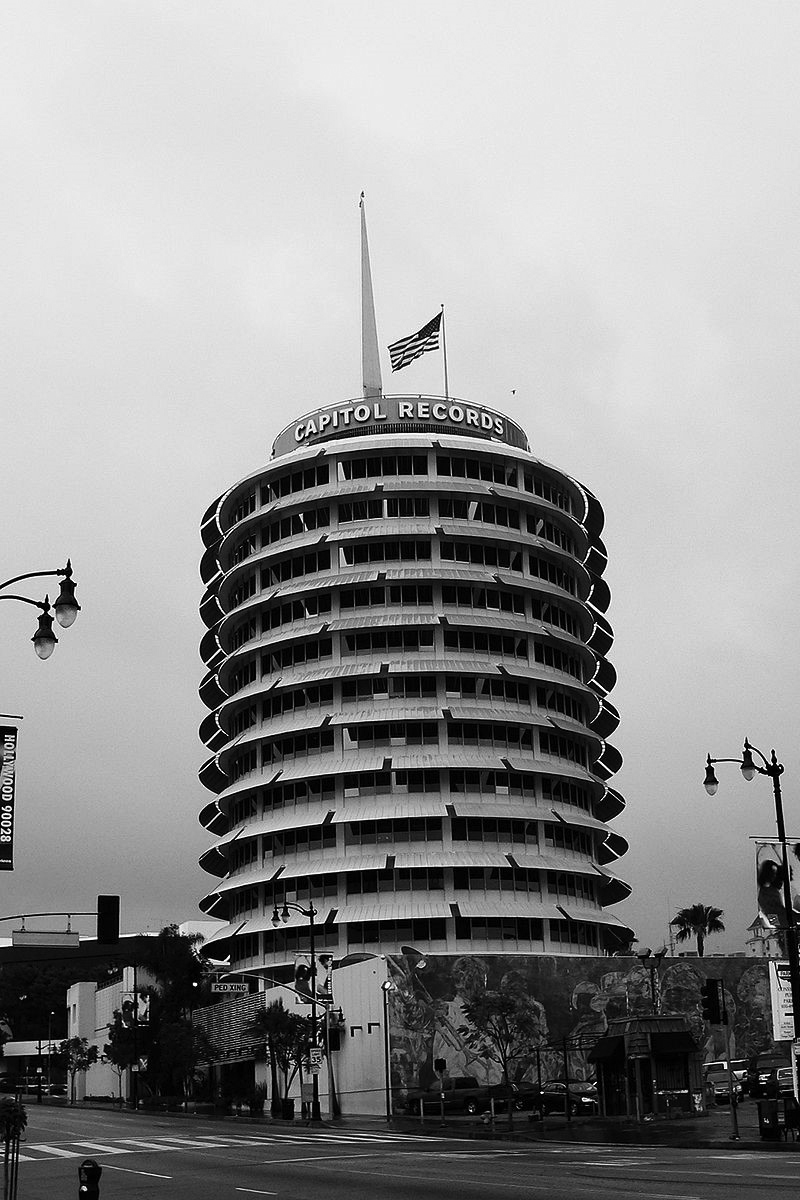 |
|
| (2006)*^ - Capitol Records building photographed in black and white on an overcast day. Photo by Kevin D. Hartnell / Wikipedia |
Historical Notes In 2006, the Capitol Records Building and Rooftop Sign were dedicated as LA Historic-Cultural Monument No. 857 (Click HERE to see complete listing). |
\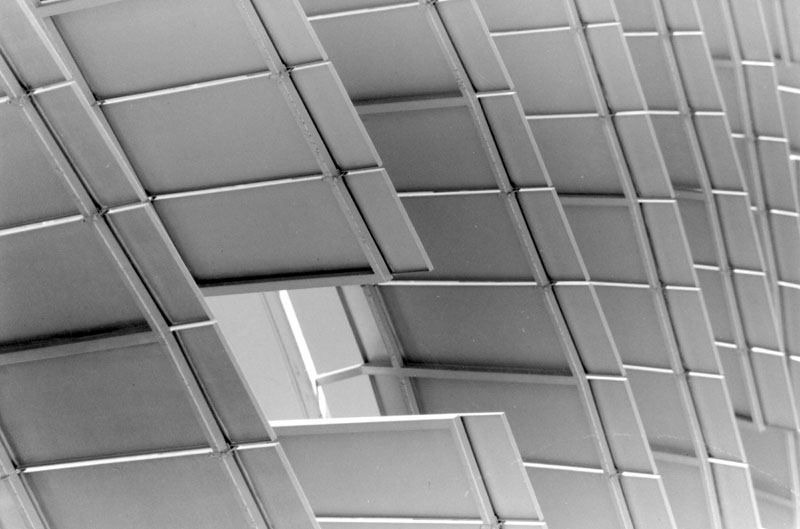 |
|
| (1999)* - Detail of the awnings of the Capitol Records Building in Hollywood. |
Historical Notes The wide curved awnings over windows on each story and the tall spike emerging from the top of the building coincidentally resembling a stack of records on a turntable. The rectangular ground floor is a separate structure, joined to the tower after completion. The tower incorporates 13 stories, to conform to the 150-foot zoning height limit that was in place at the time of its construction. Earthquake height restrictions were later lifted in 1964.*^ |
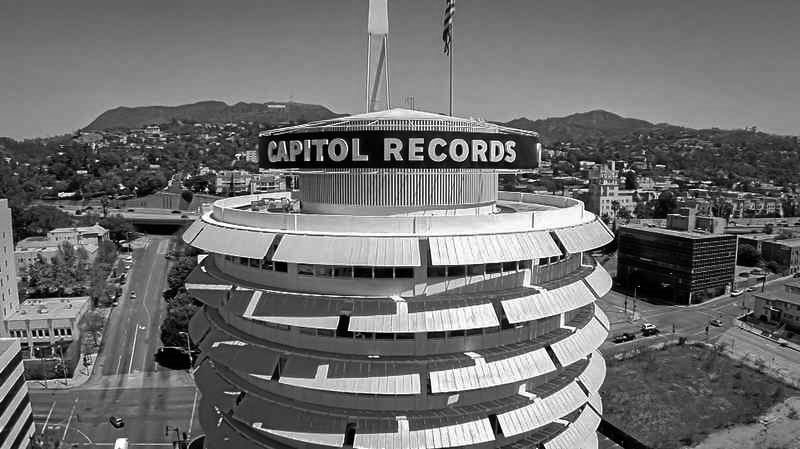 |
|
| (2014)^ – Aerial view of the Capitol Records Building shot from a Drone. Photo by Clay Folden |
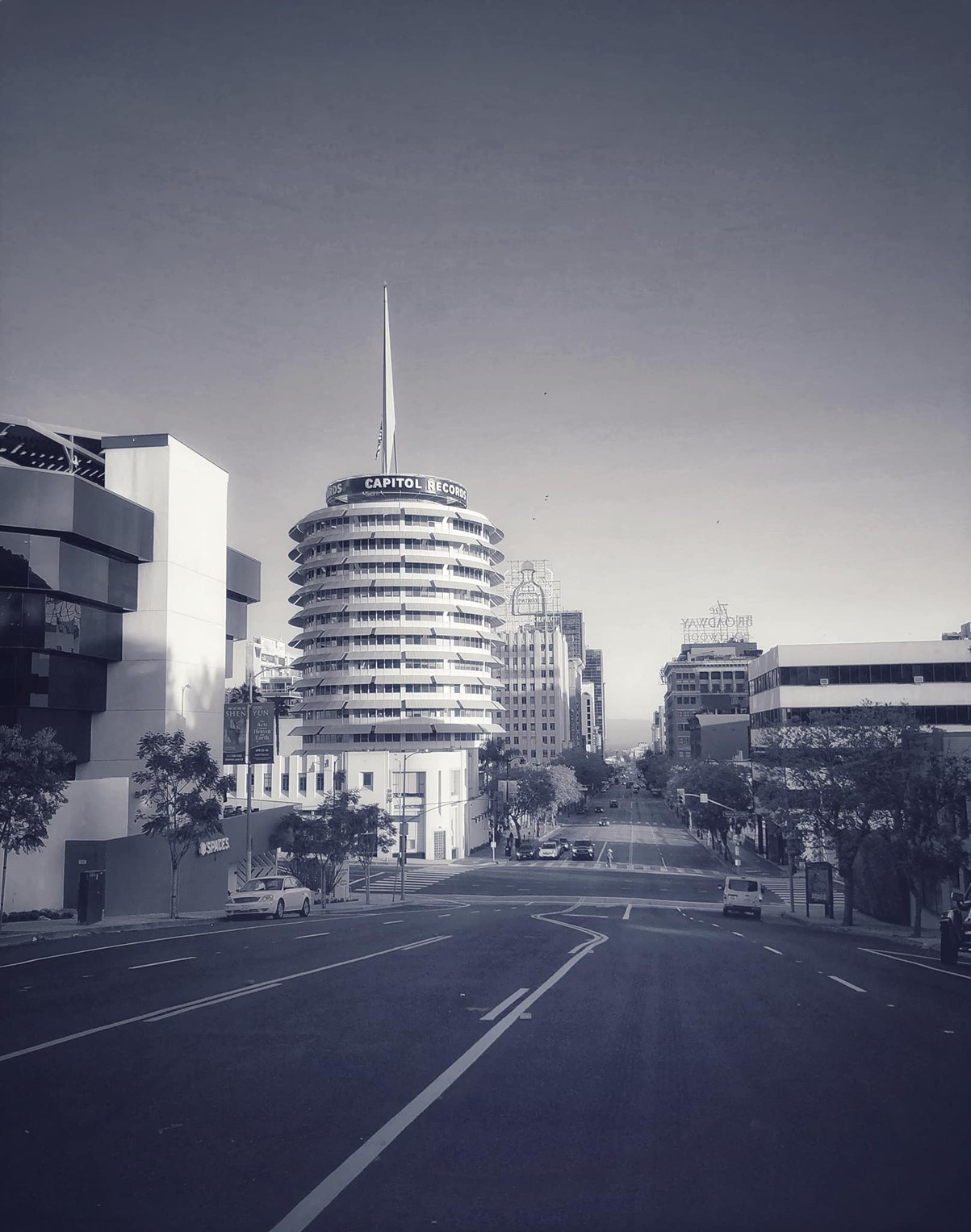 |
|
| (2022)* – View looking down Vine Street toward Yucca Street. Photo by Carlos G. Lucero |
Then and Now
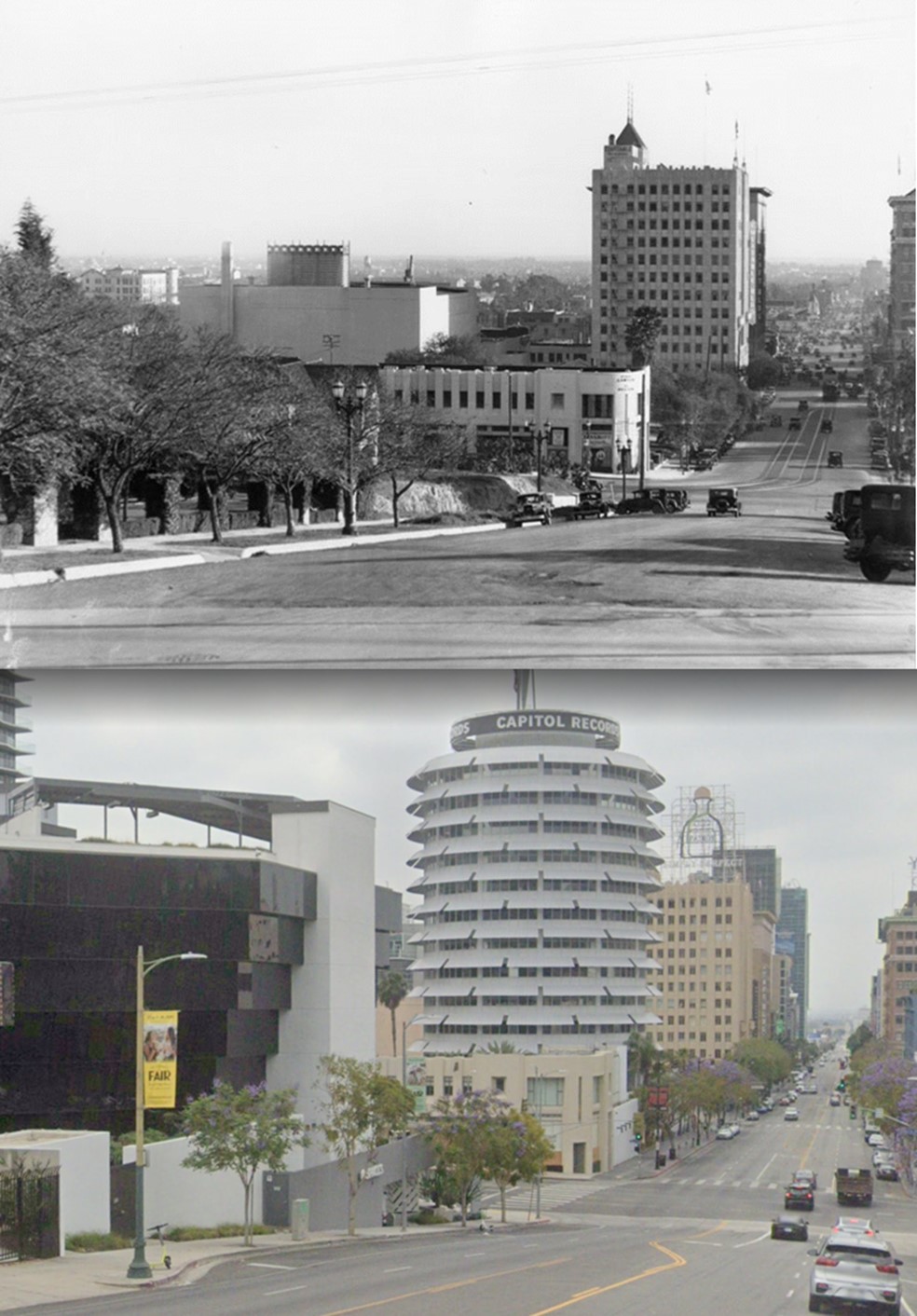 |
|
| (1930s vs. 2022)* – Looking south on Vine Street toward Yucca Street showing the changing Hollywood skyline. The landmark Capitol Records Building was built in 1956. |
Then and Now
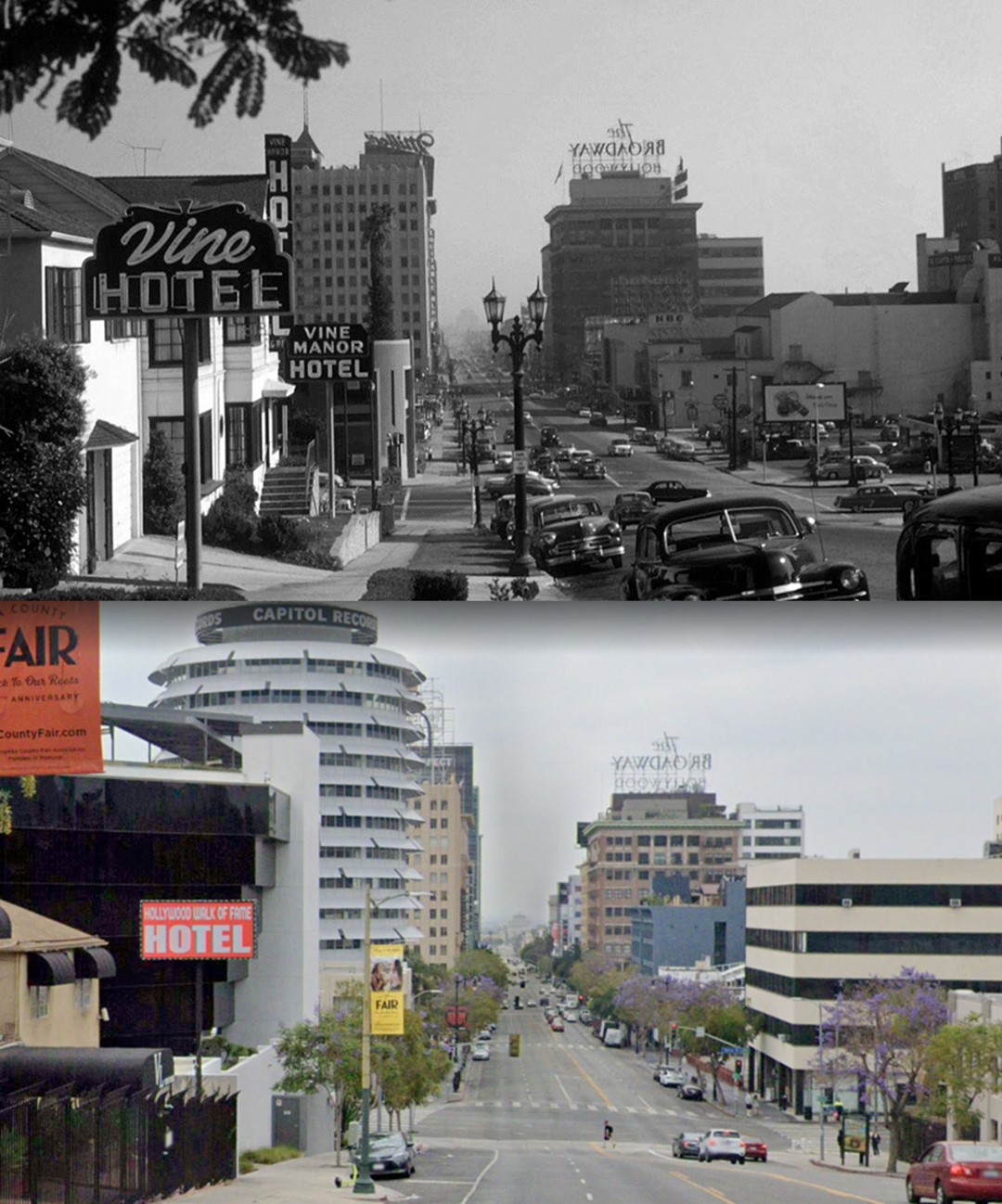 |
|
| (1950 vs 2022)* – Looking south on Vine Street from just north of Yucca Street. |
* * * * * |
|
Other Sections of Interest |
|
Water and Power in Early LA |
|
Newest Additions |
New Search Index |

A new SEARCH INDEX has been added to help navigate through the thousands of topics and images found in our collection. Try it out for a test run.
Click HERE for Search Index |
* * * * * |
< Back
Menu
- Home
- Mission
- Museum
- Major Efforts
- Recent Newsletters
- Historical Op Ed Pieces
- Board Officers and Directors
- Mulholland/McCarthy Service Awards
- Positions on Owens Valley and the City of Los Angeles Issues
- Legislative Positions on
Water Issues
- Legislative Positions on
Energy Issues
- Membership
- Contact Us
- Search Index
© Copyright Water and Power Associates
Layout by Rocket Website Templates